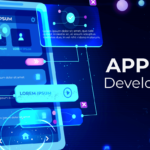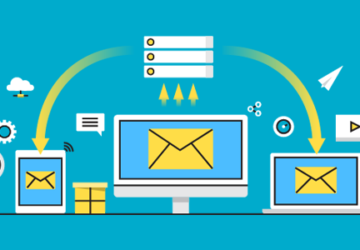As a marketer or business owner, it is critical that you maintain a close watch on how technology and consumer behavior are shifting. Keeping up with the latest technology trends and customer reactions can help you create products and services that meet the needs of the public. The use of mobile devices to access the internet has already surpassed that of desktop computers, and this trend is expected to continue. The proliferation of mobile devices and the resulting reliance of consumers on these devices have impacted and transformed every market segment. The convenience with which customers can use banking and financial services via financial app development tips is cause for optimism.
10 Financial App Development Tips
1. Streamlined and Easily Accessible Banking:
The digital platform is fast, so if you intend to use it to access banking services, you may anticipate a speedy answer. Your mobile banking app allows you to conveniently execute several banking-related operations, such as checking your account balance, making bill payments in several different ways, transferring funds between accounts, and more.
Your customer benefits not only from a reduction in hassle but also from increased mastery over and understanding of the financial situation they find themselves in. With the bank’s mobile app and the right combination of password and customer ID, customers can rapidly transfer funds without waiting in line or even being physically present at the bank.
2. You can feel safer using the mobile app:
The security protocols used in developing banking apps for mobile devices are top-notch. When a person logs into their online banking account using a mobile app, their password and PIN are protected by multiple firewalls and security levels. Using the application’s advanced security measures reduces exposure to threats like data breaches.
3. User Interface upgrades that make the app easier to use and navigate:
A simple, intuitive, and user-friendly Fintech app development service can achieve consumer satisfaction better than a complicated one. Building a mobile app that facilitates instantaneous monetary transactions with a couple of clicks, making logging in easy via PIN. etc., would make mobile banking a pleasant experience for the customer. One-touch bill pays for credit cards, and other similar services can save time.
4. Improve Mobile App Usage by Raising User Engagement:
Mobile banking apps that are intelligent and well-designed significantly impact user engagement, which improves the bank’s brand and bottom line. You might implement a mobile application approach if you want to serve your customers better and provide them with the banking services they need.
5. Insertion of Customized Attributes:
A mobile app allows you to show your company in a more appealing light to the consumer. This calls for the development of apps that are both practical and engaging. The mobile app’s user experience must be intuitive and stress-free so that they will feel comfortable using it for their day-to-day banking needs.
Shopping, finding the nearest ATM, booking a movie screening, reserving a table at a restaurant, etc., may all be integrated into the app through custom development to increase user engagement and, in turn, profits.
6. Select the proper technology stack:
Let’s get down to basics. Dependable technology is essential to rapidly expand your product’s reach and adapt it to changing market conditions. Consider the basis upon which you currently stand. Is the work completed successfully? Does your internal group or software provider work efficiently and without delays?
Otherwise, you need to get up and finish your homework. Look around the industry for viable solutions. Read, listen, and compare without worrying about missing the surface. In addition to the usual software tools and frameworks, the cloud should also be mentioned. Solid cloud infrastructure and a backup plan can make all the difference. Prioritize the fundamentals when building your technology stack.
7. You must have onboarding and helpful content:
An in-app copy is the next natural progression. That’s helpful to end users without being pushy. People don’t need to be persuaded to buy your goods because they’ve already got it. They may be using the trial version or the cheapest possible subscription plan. Also, it could be the most expensive. As long as they’re utilizing your stuff, it’s too late. So what?
You shouldn’t try to persuade them that your product is great. The argument can be found in the app on a mobile device. Your top priority is to instruct the most out of the software. People will not only be able to use the product’s most important features, but they may become invested in it and even promote it to others if given a good onboarding experience and informative text. Referrals from satisfied customers are among the most effective forms of advertising. More so if you are working with a limited advertising budget.
8 Discuss how to be a super-app:
However, if you are well-off. Increasingly, products with a single function are being reimagined as multitools. Products like China’s WeChat play an important role in people’s daily lives. Users can make cashless and mobile payments, invest, insure themselves, and borrow money or credit with these items. They can also make hotel reservations, visit an online pharmacy, or shop at an online retailer. They can do everything from looking for work to storing data in the cloud.
In the West, there appears to be a significant tendency for applications to evolve into “super apps.” Even Walmart, which underwent its digital transition far later than most other major corporations, has started to shift its product policies in this way. Although investing time and money into creating suitable financial app development tips is necessary, the result will be well worth the trouble. Only jump in after first determining if it’s right for you.
9. Drop the useless elements:
Because of the mobile nature of most Fintech Software development companies, users often need more time to stop and consider their decisions. The demand for speedy information is pressing. Absolute clarity and directness. The more information you force people to process on a single display, the less comfortable they feel. Therefore, there is a greater possibility of opting out.
Space out your user interface (UI) elements with some white (or negative) space. Using bold hues makes a statement and appeals to the viewer’s emotions. Don’t worry about what will be significant after a tap; concentrate on what’s important right now. Users do sometimes go through a series of actions and alternatives. Get everything going with an account setup, initial payment, etc. Stay calm and take things one step at a time, so you don’t get left behind. Make that clear in the layout and the tiny text used within the app.
10. Organize for after-launch service:
Okay, so the app is done, but what now? In today’s society, individuals count on ongoing help. Upgraded functionality, new features, and a faster processing speed. Consider how you can improve their experience while bringing something fresh of high quality and requiring as little effort as possible from the app’s developers. Doing so will improve public opinion of your business. It will also spread the word, which is crucial in today’s economy.







